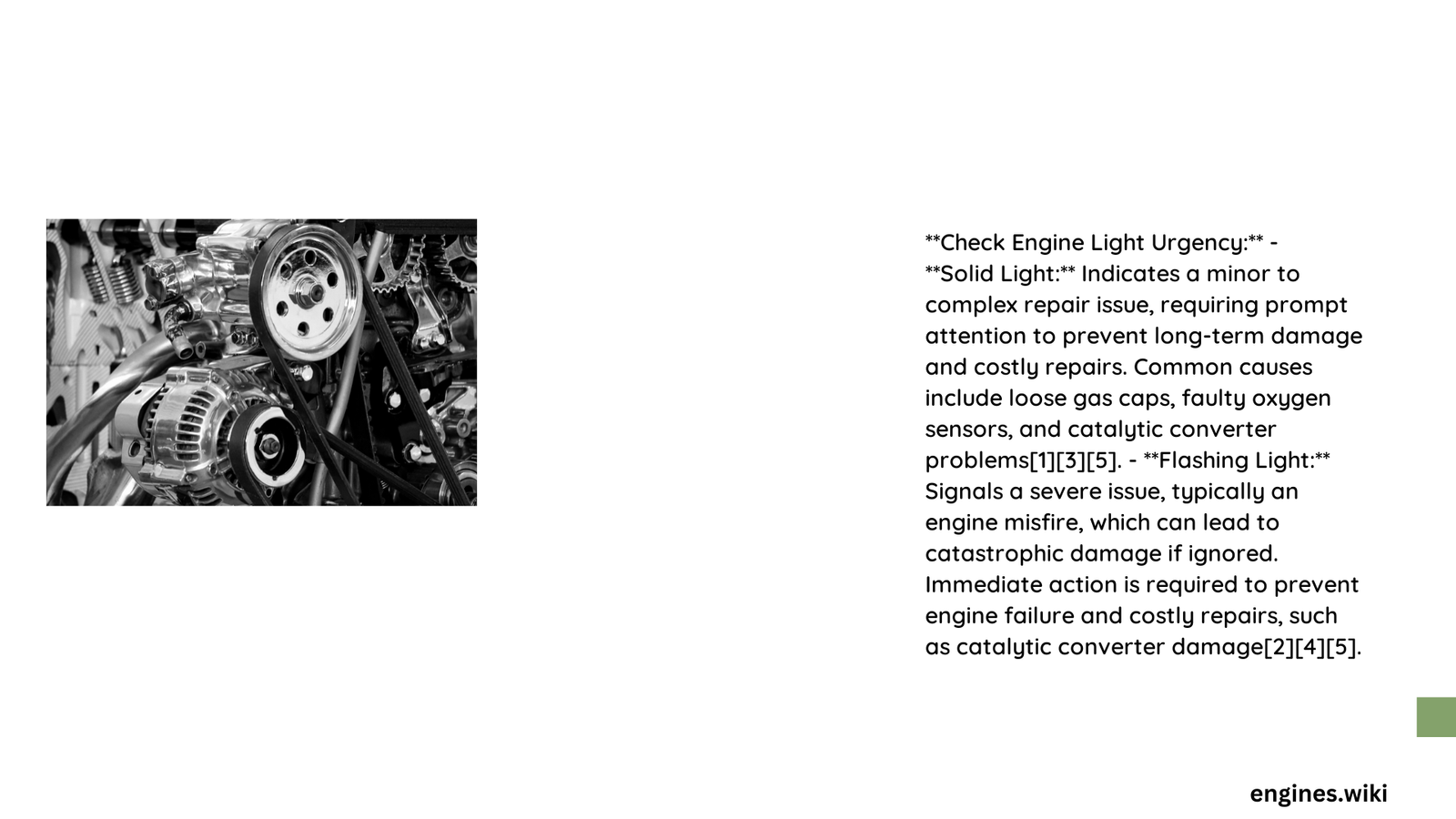When your vehicle’s check engine light illuminates, it signals a potential mechanical issue ranging from minor to critically urgent. Understanding the nuances of check engine light urgency can prevent catastrophic engine damage, save substantial repair costs, and ensure your vehicle’s optimal performance. This comprehensive guide will help you decode the warning signs, understand diagnostic implications, and make informed decisions about your vehicle’s health.
What Determines Check Engine Light Urgency?
Are All Check Engine Lights Equally Serious?
Not all check engine light activations represent the same level of urgency. The illumination pattern and accompanying symptoms provide crucial insights:
Flashing vs. Steady Light
- Flashing Light: 🚨 High Urgency
- Indicates immediate potential for severe engine damage
- Requires immediate professional inspection
-
Potential scenarios include:
- Catalytic converter failure
- Severe engine misfires
- Critical ignition system problems
-
Steady Light: 🟡 Moderate Urgency
- Suggests a developing issue
- Requires prompt but not immediate attention
- Potential scenarios include:
- Loose gas cap
- Oxygen sensor malfunction
- Minor emissions system problems
What Are the Most Critical Diagnostic Codes?
| Code Range | Potential Issue | Urgency Level | Estimated Repair Cost |
|---|---|---|---|
| P0300-P0304 | Cylinder Misfires | High | $200 – $500 |
| P0420-P0423 | Catalytic Converter | Critical | $500 – $2,000 |
| P0171-P0175 | Fuel System Lean | Moderate | $150 – $400 |
How to Respond to Check Engine Light?

Immediate Action Steps
- Initial Assessment
- Check for obvious issues (gas cap, visible leaks)
- Use a diagnostic code reader
-
Assess vehicle performance and unusual symptoms
-
Professional Evaluation
- If flashing light: Stop driving immediately
- For steady light: Schedule inspection within 1-2 weeks
- Bring diagnostic codes to a certified mechanic
What Risks Accompany Delayed Action?
Ignoring check engine light warnings can lead to:
– Exponential repair costs
– Potential complete engine failure
– Reduced vehicle performance
– Increased emissions
– Compromised fuel efficiency
Expert Recommendations
When to Prioritize Immediate Inspection?
🚨 Urgent Scenarios:
– Flashing check engine light
– Significant performance changes
– Unusual noises or vibrations
– Smoke from exhaust
– Loss of power
Cost Considerations
Average repair costs based on urgency:
– Minor issues: $50 – $200
– Moderate problems: $200 – $500
– Critical failures: $500 – $2,000+
Technical Insights
Diagnostic Tools and Strategies
- Code Readers: $20 – $100
- Professional Diagnostic Services: $50 – $150
- Recommended Frequency: Immediate upon light activation
Preventative Maintenance Tips
- Regular vehicle servicing
- Use high-quality fuel
- Address minor issues promptly
- Keep maintenance records
- Use professional diagnostic services
Conclusion
Understanding check engine light urgency requires a nuanced approach. While not every illumination signals catastrophic failure, prompt attention and professional assessment are crucial to maintaining your vehicle’s health and preventing costly repairs.
